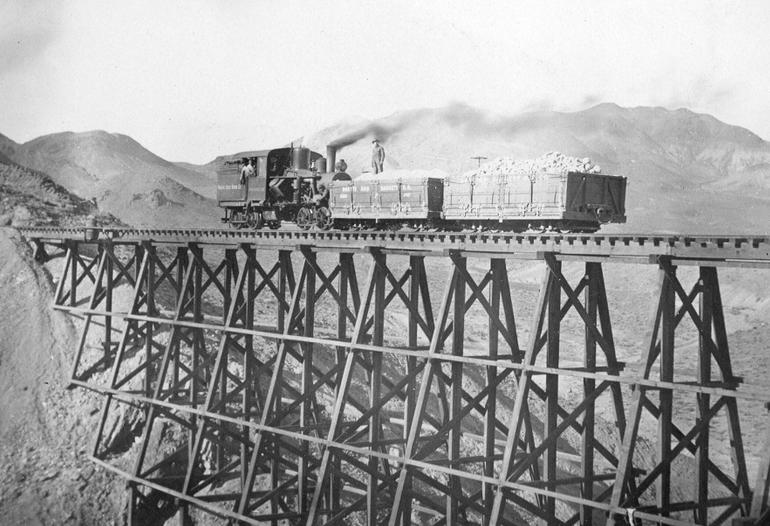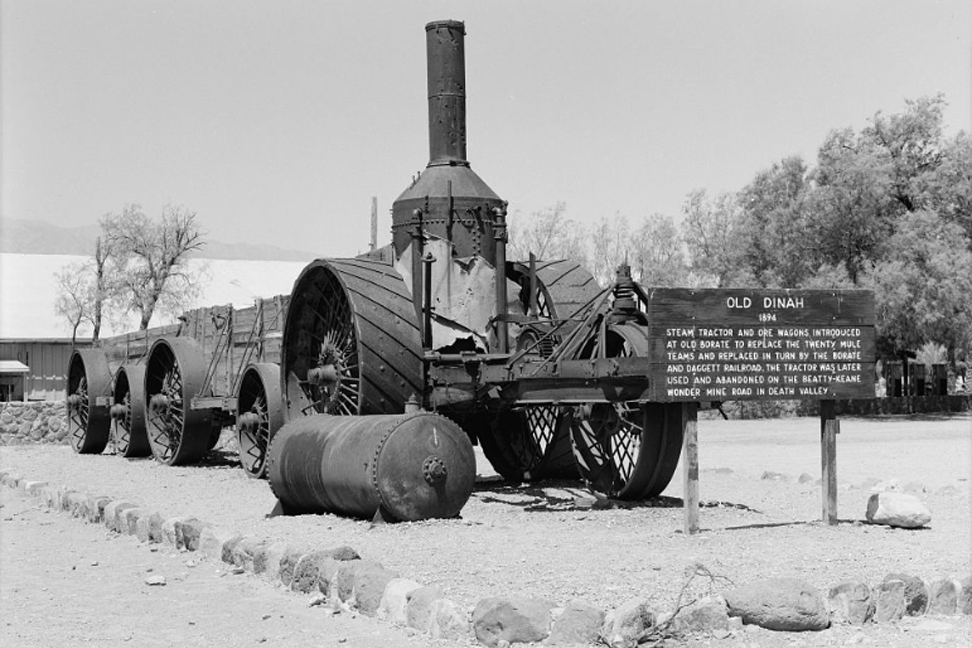Introduction The Borate & Daggett Railroad, a short-lived yet pivotal narrow-gauge railway, played a crucial role in the borax mining industry in California’s Mojave Desert at the turn of the 20th century. Its impact on the industry and its transition from traditional mule team freight to an efficient rail-based network make it a significant part of mining history.

In 1898, the Pacific Coast Borax Company, led by Francis Marion “Borax” Smith, constructed a narrow-gauge line that ran approximately 11 miles from the railhead in Daggett, California, to the mining camp of Borate near Calico. This railroad aimed to haul colemanite, a borax ore, out of the Calico Mountains, replacing the famous twenty-mule team wagon transports that had carried borax across the desert in the 1890s. The Borate & Daggett Railroad transitioned from traditional mule team freight hauling to an efficient rail-based network. It became a crucial link in a broader system of borax railroads that ultimately extended to Death Valley.
In the late 19th century, miners discovered large borax deposits in California’s deserts. They valued borax for its use in detergents and industrial processes. In 1883, prospectors found a rich colemanite borax deposit in the Calico Mountains. Mining entrepreneur William Tell Coleman, known for operating borax mines in Death Valley and using 20-mule team wagons to haul borax across long desert routes, acquired the claim. Coleman later sold his borax properties to Francis Marion Smith, who formed the Pacific Coast Borax Company in 1890.

By the late 1890s, the Borate mine near Calico produced thousands of tons of ore annually. Initially, borax was transported to the railhead at Daggett by 20-mule teams, a slow and costly process. An attempt to replace the teams with a steam-powered traction engine named “Old Dinah” failed due to the desert terrain, leading to the innovative solution of building a narrow-gauge railroad. This marked a significant transition from traditional mule team freighting to a more efficient rail-based network, reducing costs and modernizing transport.

Construction of the Borate & Daggett Railroad (1898)
The railroad was completed in 1898, running 11 miles from Daggett to Borate through Mule Canyon. It used a 3-foot gauge track with steep grades and trestles to navigate the rugged terrain. Two Heisler steam locomotives, “Marion” and “Francis,” handled the ore trains. A roasting mill was built midway at a Marion site to process the ore before shipment, and a third rail allowed standard-gauge boxcars to be loaded there.
Operations and Infrastructure
The railroad regularly hauled borax ore to Daggett, where workers reloaded it into Santa Fe Railway cars for transport. The system improved efficiency, replacing the mule teams entirely and reducing costs. The mill at Marion roasted and sacked the ore, streamlining shipment by loading directly into standard-gauge cars.
Replacing the Twenty-Mule Teams
The railroad’s completion in 1898 marked the end of the mule team era for borax hauling in the Calico region. Daggett, once a hub for mule teams, evolved into a rail center. The shift to rail transport significantly increased output and reliability for the Pacific Coast Borax Company.
Expansion to Death Valley:
The Tonopah & Tidewater Railroad By 1904, ore quality at Borate declined. Smith turned to the Lila C Mine near Death Valley, discovered richer deposits, and began building the standard-gauge Tonopah & Tidewater Railroad in 1905. By 1907, the new line reached Death Valley Junction, prompting the shutdown of the Borate & Daggett line. Operators relocated all activities north, resulting in the abandonment of the narrow-gauge line.
The Death Valley Railroad, built in 1914, served the new mines at Ryan, CA. It connected to the Tonopah & Tidewater at Death Valley Junction. Equipment from the Borate & Daggett line, including its locomotives, was reused during construction. The Borate & Daggett, Tonopah & Tidewater, and Death Valley railroads formed a network supporting the borax industry across eastern California and Nevada.
Decline and Abandonment
In 1907, they abandoned the Borate & Daggett Railroad, removed the tracks, and relocated or stored the equipment. The Borate mine and camp stood deserted, while Daggett’s narrow-gauge facilities lay unused. Workers later moved a locomotive repair shop from the line to Daggett and repurposed it.
Legacy and Remnants Today
Even though the railroad has been gone for over a century, off-roaders still use the route through Mule Canyon, where you can see remnants of trestles and the old roadbed. Ruins and mine openings still mark the Borate townsite. A historic garage built from the original repair shop still stands in Daggett. Death Valley museums showcase artifacts like Old Dinah and original 20-mule team wagons.
The Borate & Daggett Railroad helped usher in a new era of borax mining, replacing animal transport with rail efficiency. Its brief life laid the groundwork for a more extensive borax rail network, which was crucial in the history of desert mining.